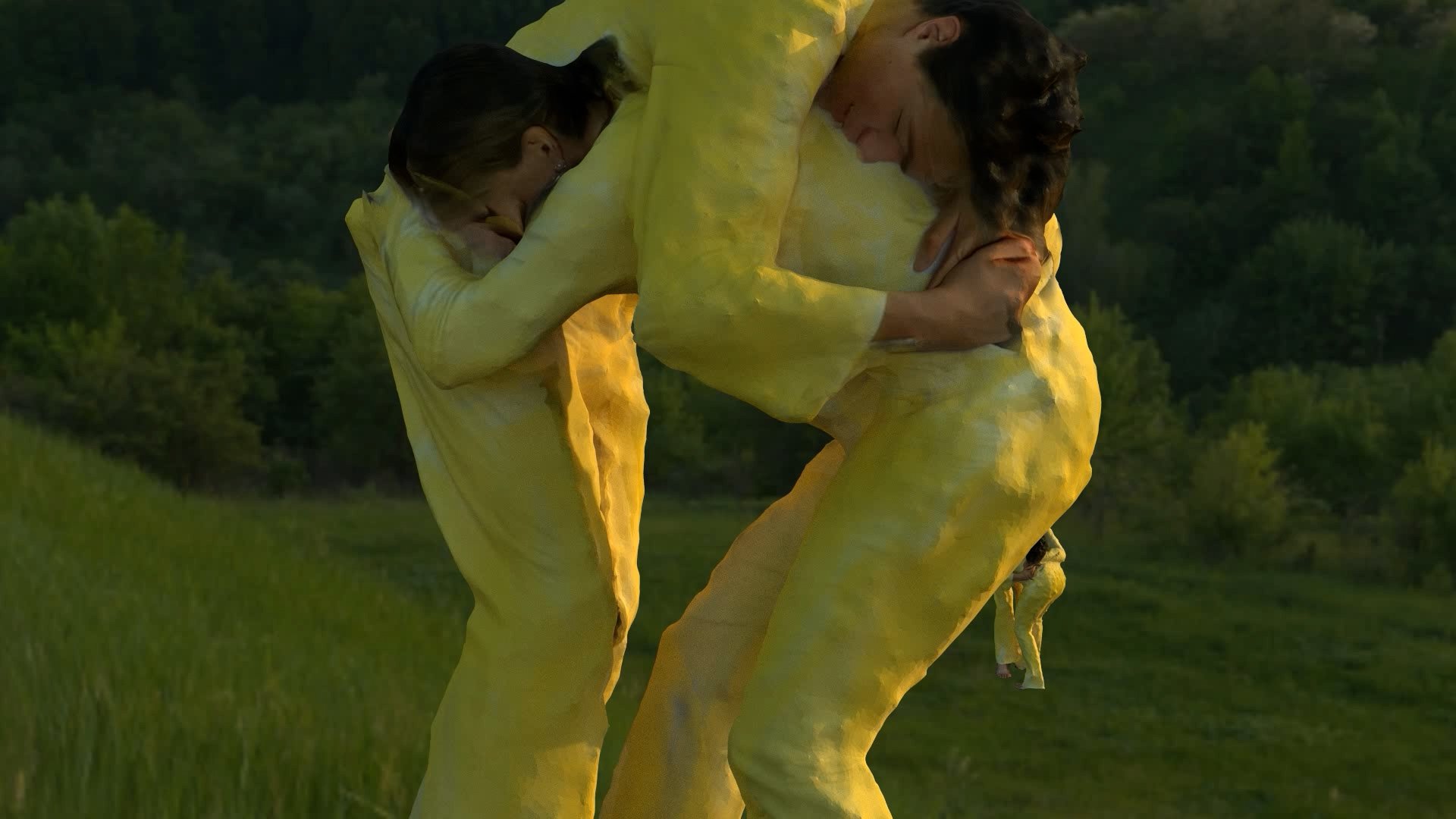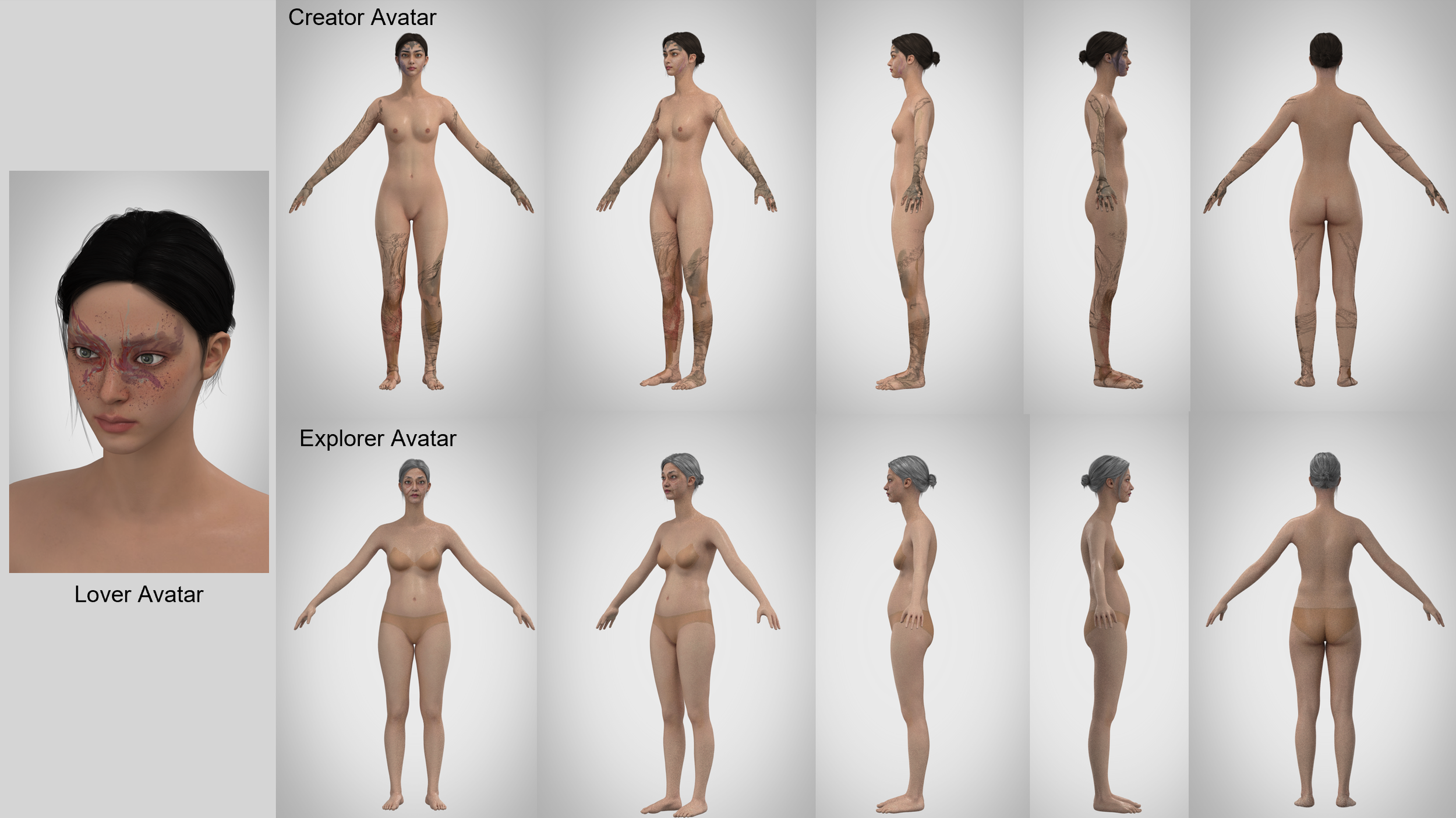
YOU | 3D SCANNING
Willem de Kooning Academie
Module YOU | “[ad]dressing the future speculative Other”
This course trains students to use digital tools (3D-scanning and animation) in their design research, concept development, and presentation phase of their fashion design projects. Although students did develop a collection during the run of this course, this module only focusses on the use of 3D-scanning and animation as tools for documentation and storytelling.
The module consists of three focus areas: the customization of Avatars considering inclusive body-shapes and diverse representation; the creation of
The course addresses three key questions:
How can students demonstrate respect and empathy towards "Others" in design, while effectively communicating their creative process and concepts through images and experiments?
In what ways do students utilise digital and virtual tools for research in the field of fashion design, particularly in investigating the effects of emerging techniques on professional development?
How do students incorporate new media and techniques into their digital workflows to organise, present, and reflect on their work within appropriate contexts?
Course description is available for download here






STRUCTURE OF THE COURSE MODULE
The course structure is divided into four phases;
1. Phase: 3D-scanning,
2. Phase: Avatar,
3. Phase: Environments,
4. Phase: Animation + Storytelling.
In first phase through a series of workshops, students learned different UX-design research methods and were instructed on different 3D-scanning technologies. Students were asked to search a real-life “Other” in their network of who they were allowed to document their direct environment using 3D-scanning technology.
In the second phase, students had to speculate about how their concept would influence bodies and body-standards in this speculative scenario. The result of this phase was fully customized Avatar in line with their speculative scenario.
The third phase of this course module was focused on designing custom environment for their avatars by speculating from their 3D-scans (phase 1). The result of this third ‘Environment’ focused phase were a series of HDRI-maps that students could use as a backdrop for their animations. Direct reference to their 3D-scans was mandatory.
In the final phase, students had to create a storyline that connected the different animated rendered shots.Students made shot-to-shot storyboards mapping out the necessary material that they would need to fill the 1-minute animation. Students also included music and graphic design to further engage and immerse viewers into their speculative narrative.
The full lesson plan can be seen here.
Instructions “[ad]dressing the future speculative Other” can be downloaded here:
1. How to make a scan smaller in datasize WDKA.pdf
2. UV-Mapping and Texture Pain WDKA.pdf
3. Blender Getting Started WDKA.pdf
4. Make a HDRI image in Blender WDKA.pdf
5. Mixamo animation cycles WDKA.pdf
The final animations can be seen here.
Student projects
DOWNLOADS
Module YOU and [ad]dressing the future speculative Other



![Xyantylsairah [Uzi] Burger](https://images.squarespace-cdn.com/content/v1/64102e040e7aa71d130d5fe3/1719917087474-KY1L6Q7RPJ23AYHETEPC/WdKA_WP3_Xyantylsairah_Uzi_Burger.jpg)







